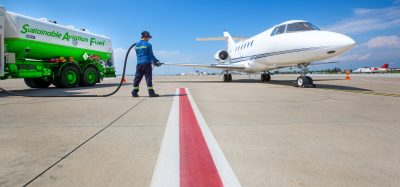Aviation capacity in the UK: emerging thinking
- Like
- Digg
- Del
- Tumblr
- VKontakte
- Buffer
- Love This
- Odnoklassniki
- Meneame
- Blogger
- Amazon
- Yahoo Mail
- Gmail
- AOL
- Newsvine
- HackerNews
- Evernote
- MySpace
- Mail.ru
- Viadeo
- Line
- Comments
- Yummly
- SMS
- Viber
- Telegram
- Subscribe
- Skype
- Facebook Messenger
- Kakao
- LiveJournal
- Yammer
- Edgar
- Fintel
- Mix
- Instapaper
- Copy Link
Posted: 7 October 2013 | Gov.uk | No comments yet
Discusses the progress plus arguments in favour of and against expanding airport capacity at the national level…


The Airports Commission has now been working for eleven months. The government announced our remit in Parliament on the second of November 2012, and we issued our first discussion and guidance papers on the first of February 2013.
We committed at the start to an open and consultative approach, and have lived up to that commitment. We have met stakeholders from all sides of the public debate – from environmental NGOs and local campaigners, through Parliamentarians, local politicians and devolved governments, to engine and airframe manufacturers and airport and airline executives. We have held a series of public meetings, have visited many of the existing airports and possible sites for new ones, and have visited or met managers of a number of complementary and competing airports overseas. Most importantly, we have issued five substantial consultation papers, on demand forecasting, air connectivity and the economy, climate change and the airline industry, on the vexed question of the respective roles of hub airports and point to point routes, and on noise and aviation.
These papers have generated many responses. We are grateful to all those who have responded and helped us in our work. Of course in some cases, at airports or in airlines, for example, one may argue that it is their job to do so. But many others, in local action groups or environmental organisations, have devoted much personal time to preparing well-considered responses to the many questions we have posed.
The nature of the papers we have published also demonstrates our determination to take a broad approach to our remit, which distinguishes this exercise from others which have preceded it. We aim to integrate a wide range of factors into our analysis, including climate change, employment, surface transport, the quality of the environment and indeed the character of life in a modern global city. We are also taking account of the dynamic nature of the aviation industry, which has been changing shape dramatically in recent years, with the rapid growth of low cost carriers and new competitors – airlines and airports – in the Middle East and Asia in particular.
Our final conclusions will not please everyone, I am sure. But they will be better informed as a result of all this effort. I hope we have improved the quality of debate on what has been and remains a fraught topic.
Developing major infrastructure projects, whether road, rail or air-related, or in other sectors such as energy, is never easy. Those who live or work near an airport will often benefit from the employment or the connectivity that it provides. But they will also often experience a significant impact on the quality of their local environment, particularly as a result of aircraft noise. In contrast, the much larger numbers of people who live elsewhere and enjoy the airport’s convenience and facilities from time to time, will not experience such effects and will not obviously contribute to offsetting them.
The remit we were given requires us to make recommendations on how to maintain the UK’s position as a hub for international air traffic. We will say more later about how we will define that objective more precisely, taking account of changes in the competitive environment for airports. But we should emphasise now that we are trying to make recommendations which will respond to the long-term needs of the UK economy, where connectivity by air is a crucial factor. A trading nation like the UK must maintain strong air links with its most important markets today, and in the future. That is especially true of an economy which depends heavily on the service sector, which is strongly influenced by the need for face to face contact.
The government asked us to prepare an interim report before the end of this year, and a final report, with clear recommendations, in the summer of 2015. We are on track to deliver these reports on time. The first one will, as requested, set out our views on short-term measures that might be taken to make better use of existing airport capacity. That includes looking at potential measures to improve surface access to south east and some regional airports. Such improvements could make a difference to the utilisation of runway capacity. We have also said that we would propose a short-list of options for new or expanded capacity in the longer term, following a call for proposals which we issued earlier this year.
That call elicited over 50 responses proposing new capacity, ranging from runway extensions to entirely new facilities on greenfield, or indeed blue water sites. But we have also received a number of responses arguing that none is needed. Others have made similar points in response to our papers on forecasting and on climate change. They say we should rule out any expansion of capacity for the foreseeable future.
The commission began its work in a state of agnosticism on this point. As citizens working in business, academia or public service we had heard the arguments in favour of new runways and airports, but none of us had taken a firm public view on the subject. So where are we now on this underlying issue? We think it would be helpful to inform continuing debate on the options if we gave an indication now of how our thinking has evolved so far.
The arguments for expansion are well known. Briefly, advocates of expansion argue that effective aviation links enable us to travel for business and for leisure – to reach new places, to visit family and friends abroad and to meet and work with clients, suppliers and colleagues. In an interconnected world economy, with companies and social networks often spanning many countries and continents, it is unsurprising that global demand for international travel is growing. There is a lively debate about causation and correlation which will perhaps never be resolved, but there is no doubt that there is a strong statistical link between the countries we are connected to and the countries we trade with. As new trade links grow, new air links will be needed to support them, and vice versa. Equally, there is no doubt that people value highly the ability to travel abroad for leisure – whether to expand their horizons or simply to work on their tan.
But we need to ask whether growth in aviation is consistent with other obligations, for example to play our part in tackling climate change, and – if so – whether any significant expansion in airport or runway capacity is needed to accommodate future demand. It is to these questions that I turn next.
Four principal arguments are advanced by those who maintain that we do not need to plan for new airport capacity in London and the south east. There is some overlap, and not all their advocates support all of them, but it is helpful to distinguish the different strands for the purposes of exposition.
The first is that official and industry forecasts of demand for air travel have been systematically over-optimistic. Successive Department of Transport forecasts have recently been reduced, since the financial crisis and associated recession. That is partly a function of lower GDP growth, which is a strong driver of demand, but also a result of higher oil prices, which have increased the cost of flying aeroplanes. So we should not take continued rising demand for granted. Had all the requests for additional airfields and runways been accepted in the past, we might have many redundant pieces of infrastructure today. Some make the additional point that changing competition between airlines and airports means that new competitors have emerged, with significant competitive advantages for some transfer passengers (in the Gulf and elsewhere), which will reduce the available market share for UK airports.
The second contention is that even if growth in demand for aviation continues to rise, airlines will be able to accommodate it within our current runway capacity. That may involve some operational changes, and continued increases in load factors and in aircraft size. It is argued that Heathrow has not achieved the increase in the average number of passengers per flight that was envisaged in the planning application for Terminal 5, for example, and that doing so would allow a material increase in the number of passengers handled there without any more air traffic movements. It would also entail greater usage of existing spare capacity – noting that even in the south east there is still substantial capacity available at airports such as Stansted, Luton or Southend.
The third set of arguments comes from an environmental perspective. The claim here is that we should not simply build airport capacity to meet whatever level of demand emerges – what has been known as the “predict and provide” model. In particular, it is argued that the UK’s legislated climate change commitments – to reduce UK emissions by 80% by 2050, relative to 1990 – impose a severe limitation on the amount of air travel we can allow. While only 6% of UK carbon emissions today are associated with air travel, that proportion could rise sharply as other sectors reduce their emissions. If we allowed unlimited growth in air traffic, that would impose high costs on the rest of the economy if the overall target is to be met, for example, pushing up domestic heating bills as the energy sector has to decarbonise more quickly. And in some sectors, additional emissions reductions over and above what is already proposed may prove technically infeasible. So, in the absence of a comprehensive emissions trading scheme, the best way to control air travel may, on this argument, be to constrain the growth of airport capacity.
The fourth argument is that there is a role for government in requiring or incentivising the redistribution of air traffic to airports outside the south east which have spare capacity and could comfortably cope with the increased demand we expect to emerge. This would both provide scope to accommodate demand growth and bring further benefits in terms of rebalancing the economy away from the most congested areas of the country, which is an objective of government policy. A number of regional airports have put forward specific ideas on how their capacity and utilisation might be enhanced. Some of them involve reducing the rate of Air Passenger Duty charged on passengers from regional airports. Others envisage even more interventionist measures – such as the use of traffic distribution rules to move airlines from one airport to another – or softer measures such as marketing campaigns (perhaps to promote regionally-based long-haul routes which have been in decline).
I will examine these arguments in turn. We will need to reach a settled view on them in our interim report, but we think it right to give an indication now of our current thinking.
On the first point, that demand forecasts have been over-optimistic, we accept that has been true, to some extent. Our consultation paper on forecasting showed the past record. Clearly forecasts prepared before the recession were too high. Of course forecasting is always difficult, especially about the future, but perhaps the department has not been as clear as it might have been about the extent to which its forecasts are contingent on assumptions about economic growth, which are inherently uncertain. We hope to improve on the current forecasting approaches in our interim report, for example by considering a greater range of scenarios than the DfT does currently.
Nonetheless, the long-term record of expansion is striking, especially since the low cost carriers began making air travel more widely available than ever before. There is little sign that globally these markets are yet saturated. Some argue that the air traffic market in Western Europe is maturing. Certainly, in the UK, demand has not yet returned to its 2007 peak, though it is once again on an upwards trajectory. But even if this is the case, other markets in Europe, Asia and elsewhere are continuing to grow and have plenty of further scope to do so. Technology is making videoconferencing a more realistic option for business, and some companies are committing to reducing their use of aircraft over time, but videoconferencing is not an effective substitute for visiting relatives or going on holiday, and face-to-face contact is going to remain an important part of doing business.
So the weight of opinion we have heard suggests that demand for air travel to and from the UK is likely to continue to rise over time, and that the weight of that increased demand is likely to remain focused on London and the south east. Even if some of this can be accommodated by larger planes, there will still be a need for more new routes to be opened up, including to emerging markets, as the UK’s trading patterns evolve. That means more take-off and landing slots – but Heathrow is already operating at capacity, and Gatwick is close to doing so.
As Eurocontrol, the organisation responsible for co-ordinating air traffic management at the European level, point out in a recent report ‘Challenges of growth 2013’, many countries in Europe have scaled back their plans for additional capacity. So the hiatus in UK development may have had fewer economic costs than it would have done had demand continued to expand very rapidly. Nonetheless, they identify the UK as one country where capacity constraints will begin to bite sooner than elsewhere.
This leads on to the second argument – which is that the market will respond to those capacity constraints by finding ways to increase capacity at congested airports or to reallocate demand to those locations where unused capacity still exists. This argument has been made by many of those who are concerned about the noise effects and other implications of adding more runways and more traffic movements in locations that are already perceived to be badly affected.
In our interim report we will look carefully at the possibility of operational improvements which may deliver some modest additional capacity – although that will have to be balanced against the desirability of improving resilience at our most congested airports.
But none of the submissions made to us have suggested that there are transformational gains to be had. It is true that larger aircraft, like the Airbus A380, could deliver some additional capacity in terms of passenger numbers. New aircraft in each market segment are likely to be a little larger than their predecessors (as well as being quieter and more fuel-efficient). But airline fleets change slowly and the direction for travel is not all one way (for example, some new Boeing 787s may replace larger 747s). Also, airports themselves do not have the power to require faster fleet turnover, especially if new equipment is not yet available, though they can try to incentivise it, as Heathrow does now.
We may see a gradual increase in passenger loadings, but much of the potential for significant improvements has already been driven out as a result of low-cost competition, and if new routes are to be developed there will inevitably be times when load factors are reduced and when smaller aircraft are used.
So will the industry respond to congestion instead by reallocating services to underused airports? Here, it is important to remember that the airline sector is not one homogenous entity, but is made up of different companies serving different markets and with different requirements for infrastructure and investment. The low cost sector has been successful in putting underused airport capacity to profitable use, but not all parts of the industry may be able to do so as easily. Airlines will choose to fly from the airports that best meet the needs of their passengers. Clearly, the industry will continue to develop and evolve, but the persistent and tightening capacity constraints at key airports in the south east indicate that the market alone will not resolve this issue.
We will say more in our interim and final reports about our views on the level and types of demand that are likely to emerge in the future. In other words, will growth be more in the leisure and visiting friends and relatives markets, or in business-related flying? Which destinations will be opened up, and how will the current network airlines, and the low cost carriers, develop? We should note that ‘low cost’ and ‘leisure’ are no longer synonymous – over 20 per cent of low cost traffic is now business related. These factors, and others like them, will in turn influence our view on the quantity, type and location of any new capacity – whether at an existing or new hub airport or elsewhere.
If we are to make deliverable recommendations, however, we will also need to bear in mind that private sector investors will not necessarily provide capacity to meet fully whatever level of unconstrained demand is forecast. Runways are expensive pieces of infrastructure; new airports still more so. Investors will not finance them without a strong likelihood of earning a return on their investment, which implies a high level of confidence that they will be well-used, since passengers are the ultimate source of revenue.
The third point, on climate change, is complex. We had hoped, as had many EU governments, that it would be possible to situate aviation in a new and comprehensive European Emissions Trading Scheme. But that scheme has been suspended in the face of opposition from non-EU governments and airlines. Work is under way to prepare a global agreement on containing aircraft emissions, and there are some encouraging signs from the latest round of negotiations at ICAO, but success on that front is still not guaranteed. That uncertainty has brought airport capacity into sharper focus. Some argue that, in the absence of any other agreed constraint, it is appropriate to hold down aviation growth by not building new airports and runways. That may be a second best solution, but it is one which is available.
The best outcome would clearly be a global deal on aviation. But the achievement of such a deal may be some time off and in any case we should not ignore the UK’s own obligations, which are enshrined in the Climate Change Act of 2008.
Here we take our cue from the Committee on Climate Change. In its report on aviation in December 2009 the committee agreed that further growth in aviation could be reconciled with the government’s climate change objectives, as long as planned emissions reductions were delivered elsewhere in the economy, and the industry played its part with increased fuel efficiency and better operating efficiency. Specifically, it suggested that UK-sourced demand could grow by roughly 60% to 2050, relative to a 2005 baseline.
Growth beyond that, unless current assumptions about fuel efficiency and the use of alternative fuels prove to have been overly pessimistic, would put great pressure on the rest of the economy to achieve further carbon reductions, which could be very costly. At present, aviation accounts for only 6 per cent of UK carbon emissions, but on the CCC’s projections by 2050 it would account for 25 per cent.
We are very alive to the climate change problem. We do not believe it would be responsible for any government to accept a massive expansion of aviation with no reasonable expectation of being able to deliver commensurate carbon emission reductions. We are in the process of updating the Committee on Climate Change’s analysis and will present our findings in our Interim Report. However, it seems unlikely that things have changed so much in the last four years that the fundamental message will be different.
The question is whether the growth that the CCC has said is compatible with the UK’s climate objectives implies an expansion in runway capacity. Some argue that it does not – that there is sufficient runway capacity in the UK to accommodate that level of growth and more besides.
The challenge, however, is to deliver the best solution for the UK overall, which has to be one that both achieves our carbon targets and delivers the connections that our economy and society demand. These are not irreconcilable goals. But they mean that, alongside looking at carbon emissions, we need also to consider what our future aviation needs are likely to be and where passengers are going to want to fly to and from over the coming decades, in order to identify what configuration of airport capacity is most likely to facilitate those journeys. In short, how do we deliver the maximum connectivity bang for each of our carbon bucks?
Our work so far suggests that doing nothing to address the capacity constraints in our current airport system would not be the right approach. Its likely effect would be to restrict passengers’ choices and it could have unintended consequences for the efficiency and resilience of UK airports, as well as possibly leading to some flights and emissions being displaced to other countries.
Our provisional view, therefore, is that additional capacity will need to be provided, alongside an overall framework for managing emissions growth, if we are to deliver the best outcomes in both environmental and connectivity terms.
Finally, the fourth argument is that such a conclusion ignores the scope for regional airports to take more of the strain, if only the government were prepared to intervene to make this happen. Many passengers from elsewhere in the UK use south eastern airports. They might be expected to prefer to use an airport nearer to home.
Some regional airports have indeed grown quickly in recent years, and have established profitable niches in the national market. There is nothing to prevent that happening, and airlines have an incentive to run flights from regional airports, which offer cheaper landing charges and, often, faster boarding times, with cheaper parking for passengers. These are welcome developments.
But it remains the case that the largest market and the highest propensity to fly are in the south east of England. On average, a resident of Greater London takes 2.5 flights a year, compared to just over 1.5 for the country as a whole. This will always make it an attractive market for airlines, even before you take into account the significant projected population growth in the region. The population of Greater London has grown much more rapidly than forecast in the last decade.
Also, some routes will only ever be available from the largest airports. We have been given a clear message from many regional stakeholders that while their local airports are important to their economies, so is access to the international connectivity available in London and the south east.
Links to other European hubs from regional airports provide an alternative to some degree, but this is not always the best solution either for passengers or for the environment. The journey from Glasgow to Chicago, for example, is roughly 17 per cent longer via Frankfurt than via London.
An increasing number of regional airports now also have services to the Gulf hubs, and there are some routes which these are well-placed to serve. Birmingham to Mumbai is only fractionally further via the Gulf than via London – and the range of onward destinations offered on the Indian Subcontinent is huge. A passenger going from Tyneside to Sydney only needs to make one stop if travelling through Dubai, compared to two if she goes via London. But these airports will not provide the most attractive option for every journey, even when heading east. The distance from Glasgow to Beijing via Dubai, for example, is more than a third longer than via a London airport, with all that implies in terms of convenience and carbon emissions.
It is important to recognise, too, that the tools available to the authorities to influence the location of flights are very limited. The European framework governing the use of traffic distribution rules puts tight bounds on the scope for intervention and other EU rules prohibit any market-distorting use of subsidies. It has been put to us that the government could use the rates and incidence of APD to encourage new routes, especially long-haul routes from regional airports. There is currently one example of such an arrangement, in Belfast. In our interim report we will explore the options, but our early analysis has suggested that even with a significant differential the effects would not necessarily be substantial, and there could be perverse consequences. Distributing demand to some destinations across a number of airports could see a higher number of smaller flights being needed to achieve the same degree of national connectivity. We will say more on this point later.
It may be that new surface access options open up other airports to traffic from the south east. The planned HS2 link to Birmingham International is a case in point. We will consider the extent to which this may increase the attractiveness of Birmingham to flyers from the south east. But we will also need to take into account that HS2 would make access to other airports – Manchester no less than Heathrow – easier for residents of the Midlands.
So our provisional conclusion from this analysis of the four arguments put to us is that we will need some net additional runway capacity in the south east of England in the coming decades. (Some of the options presented to us envisage the closure of existing airports to provide headroom for expansion elsewhere: in our scenario planning we need therefore to take account of potential ups and downs in gross capacity over time). An attempt to rely only on runways currently in operation would be likely to produce a distinctly sub-optimal solution for passengers, connectivity and the economy.
It may also not be the best solution in terms of minimising the overall carbon impact of flights and travel to and from airports. More point to point flights in smaller aircraft, together with long passenger movements to airports remote from them, bring significant disadvantages. A mechanism for managing the carbon impacts of aviation will be needed if the UK is to achieve its statutory carbon targets – just as it will in other countries. But this is the case whether new runway capacity is provided in the south east or not.
In our interim report, we will carefully assess the scale of new capacity needed, within the context of the UK’s growth ambitions and taking into account the potential constraints on expansion, including both financial viability and our commitments on carbon emissions. How much new runway capacity is required depends on how that capacity will be utilised, and where it is, as well as on its overall theoretical capacity (which may in any event change over time). But we reached the view that it would be helpful at this stage to set out some of our early thinking on the issue of overall capacity. That will, we believe, usefully inform the debate on the options for longer term developments which have been put to us.
I have focused today (7 October 2013) on the arguments in favour of and against expanding capacity at the national level. I have not touched upon a range of important issues of relevance to the case for capacity increases at one location or another. These include negative impacts, for example in relation to noise or air quality, and also the potential positive effects of infrastructure investment on local and regional economies and employment. These are issues which the commission is examining closely, as our recent discussion paper on noise demonstrates, and they will play a key part as we identify our interim recommendations, as well as in the consideration of the options taken forward for more detailed development next year.
As we are with all aspects of the commission’s work, we would be interested in comments on the analysis I have set out today (7 October 2013). We have published a copy of this speech on the commission’s website, together with details of the email address to which any comments should be sent (until 31 October 2013).

















